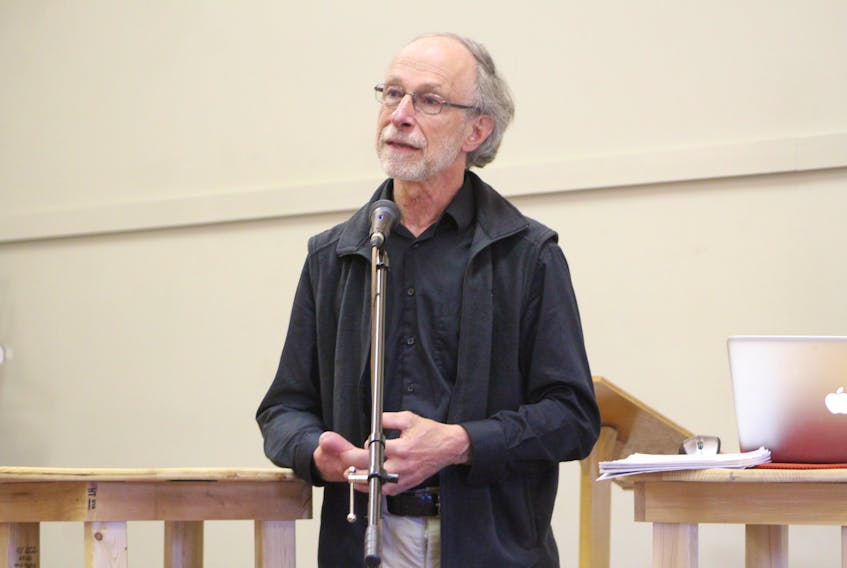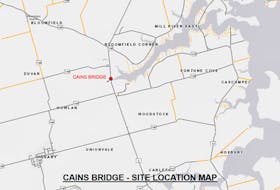The ocean is heating up due to climate change, which means less oxygen in the Gulf of St. Lawrence and potential future impact on marine life around P.E.I., says biologist Sylvain Archambault.
The co-founder of the St. Lawrence Coalition and a biologist at Canadian Parks and Wilderness Society Quebec was the keynote speaker at the World Ocean’s Week: Celebrating and Protecting the Gulf of St. Lawrence, an event organized by Save our Seas and Shores P.E.I. held Saturday at the P.E.I. Farm Centre in Charlottetown.
“We have sectors with very, very little oxygen concentration, and these dead zones are more and more frequent and very worrying and has a direct impact on bottom dwelling species like Northern Cod, spotted wolf fish and other species,” said Archambault in his presentation titled “The Gulf of St. Lawrence, An Ecosystem Under Threat, In Need of Love”.
“Because the oxygen is getting so low in certain sectors, they are losing habitat.”
Archambault said the reasons for these toxic low oxygen zones is the Labrador current not flowing into the gulf, like it used to, as a result of climate change.
“Now, the Labrador current is slowly getting thinner and the Gulf Stream is moving north a little bit and the warm Gulf Stream with oxygen-poor water is slowly moving more into the gulf. So, this is very worrying and is a direct impact of global changes.”
Archambault said the world’s atmospheric C02 has increased 30 per cent since 1960, and 25 per cent has been absorbed by the ocean, turning it into carbonic acid.
“Carbonic ions, which is the main building blocks of shellfish, oysters or clams and mussels and also the skeletons of crabs and lobster, they will eventually be affected,” he said. “Right now in the gulf, the impacts are not yet there, but elsewhere in the world we can see these impacts happening, shells get thinner, organisms get more vulnerable.”
Invasive species, habitat destruction and pollution and also causes for concern.
Archambault said it is necessary to have more marine protected areas (MPAs), which restrict human activity for a conservation purpose.
“Many of these sites are multi-use including fishing, but some MPAs have restrictions on certain activities to protect entire species or habitats,” he said.
Rosemary Curley, biologist and Nature P.E.I. president, talked about marine species at risk, both in accordance to the Species at Risk Act, as well as from data gathered from fishermen.
Some of those included Atlantic cod and Atlantic bluefin tuna,
Producer Mary Gorman showed her film, “The Vanishing Call of the Right Whale”, narrated by actor Ethan Hawke, which discussed how underwater noise like seismic blasting is endangering the right whale.
Seismic surveys involve powerful airguns blasting the seas in short intervals, measuring the echoes off the seafloor to help map offshore oil and natural gas fields.
“The effects of this noise produced every 10 seconds, sometimes for months on end, are devastating to marine life but particularly to whales,” said Hawke in the film. “Hearing is as critical to whales as vision is to us. Whales depend on sound for all their life functions.”
The loud noise from the blasts deafen the marine life and make right whales unable to communicate with each other about food, mating and survival.
There are roughly 411 right whales left in existence.









